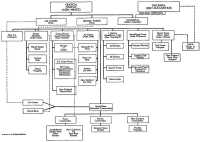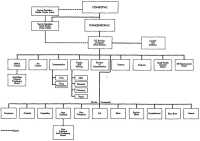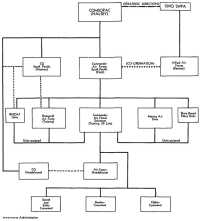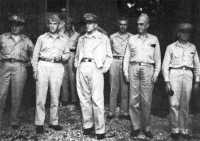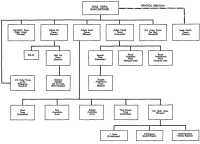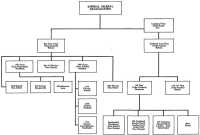Chapter 20: CARTWHEEL and the I-GO Operation
Secrecy and celerity are the life of dispatch in all military operations.—FRANCIS BACON
The Joint Chiefs’ directive gave to the planning in the Pacific a new urgency and an immediate goal that had been absent before. Until agreement on forces and objectives had been reached in Washington the plans developed in the theater had of necessity been tentative. Now, for the first time since July of the previous year, realistic plans with specific targets, forces, and dates could be made, and it was to this task that the Pacific planners turned in the spring of 1943.
Meanwhile, the Japanese had not been idle. Determined to retain Rabaul, they spared no effort to strengthen their bases in the Solomons and New Guinea. If they could not hold the outposts to Fortress Rabaul, at least they could make every Allied advance a costly and time-consuming task. While they did what they could to disrupt Allied preparations, they sought to improve their position in the threatened area. When these efforts failed, the Japanese assembled all their resources for an ambitious and desperate attempt to smash Allied air power and cut the enemy’s line of communications. Thus, even before the offensive called for by the Joint Chiefs began, the Solomons—New Guinea area became the scene of violent air attacks on whose outcome depended the fate of the plans then being prepared.
CARTWHEEL
Although much work had been done by both the South and Southwest Pacific staffs on plans for the operations called for in the new directive, it was more than a month before this task was completed and two months more before the first operation began. Drafting the over-all plan was not difficult. All that was required was to revise ELKTON to bring it into line with the forces made available and the objectives set by the Joint Chiefs.
The chief problem before the theater planners was still the coordination of operations in the Solomons with those in New Guinea. So far as the Solomons were concerned the directive called only for the occupation of southern Bougainville, but, as Harmon later wrote, “it was obvious that ... a long jump could not be made from Guadalcanal and the Russells into Bougainville.”1 An intermediate base within fighter range of Bougainville would have to be secured first, and for the South Pacific planners this
meant the seizure of New Georgia and the Munda airstrip. True, Admiral Halsey had accepted the ELKTON timetable but had made it clear that he intended to take advantage of any opportunity to seize favorable positions in the central Solomons. Thus, despite MacArthur’s assertion that the forces of the South Pacific could move directly into Bougainville once MacArthur had landed at Cape Gloucester, Halsey and Harmon still clung to their belief that New Georgia would have to be taken. Their job was to convince MacArthur they were right.
That task fell to Halsey and early in April he flew to Brisbane to talk with MacArthur. It was their first meeting, but five minutes after he had reported, Halsey later wrote, “I felt as if we were life long friends.”2 Perhaps MacArthur felt so, too, for the admiral seems to have had little difficulty in persuading him of the necessity of seizing New Georgia and of doing it as quickly as possible. Before the meeting was over MacArthur had not only given his consent to the New Georgia plan but had agreed that the operation be conducted simultaneously with the occupation of Woodlark and Kiriwina, the first objectives of the southwest Pacific.
This meeting between the two commanders was the first test of the command arrangement so recently established by the Joint Chiefs. So far as Halsey was concerned, his new assignment gave him two “hats,” one as a subordinate to Nimitz who controlled his forces and the other as a subordinate to MacArthur who dictated his strategy. But after the
meeting he remarked that this arrangement was both “sensible and satisfactory.” Nor did he later have reason to change his mind, for as the war progressed his relationship with MacArthur grew ever more friendly. “Not once did he, my superior officer, ever force his decisions upon me,” he wrote later. “On the few occasions when I disagreed with him, I told him so, and we discussed the issue until one of us changed his mind.”3
This problem settled, the planners completed their work and on 26 April ELKTON III was issued. Known by the code name CARTWHEEL, this plan called for thirteen separate operations in a period of eight months during which the forces of the South and Southwest Pacific would advance by successive stages, always in support of each other and under cover by land-based fighters, to positions from which they could converge on Rabaul. The operations fell into two groups: those along the western or New Guinea axis and those in the Solomons along the eastern axis. (Map III) In the first place the Southwest Pacific would occupy Woodlark and Kiriwina (with Halsey furnishing the garrison troops for the former) , while forces from the South Pacific moved into the New Georgia group. While this last was still in progress MacArthur’s forces would embark on the second phase: the capture of Lae, Salamaua, Finschhafen, and Madang. By the time Madang was taken, Halsey would have captured Faisi in the Shortlands and Buin in southern Bougainville. The third and final phase of CARTWHEEL would see the landing at Cape Gloucester in western New Britain, the capture of Kieta on the east
coast of Bougainville, and the neutralization of Buka, a small island off the northern tip of Bougainville.4
The timetable for this complicated series of operations was carefully worked out so that the final objective would be won by the end of the year. The first phase would begin in June, one month being allotted for the occupation of Woodlark and Kiriwina Islands and five for New Georgia. By the time New Georgia was taken in October, MacArthur’s forces in the Southwest Pacific would have seized Lae, Salamaua, and Finschhafen and begun the offensive against Madang. Meanwhile, the forces of the South Pacific would have gone on to take Buin and Faisi, and then Bougainville in January 1944. By that time Southwest Pacific forces would have concluded operations on New Britain. But carefully as this sequence of operations was worked out, everyone recognized it was only tentative and subject to change, depending, as MacArthur remarked, on the “fluctuation of tactical circumstances.”5
The forces for each of these operations were as carefully computed as the timing. In the first phase MacArthur would use two regimental combat teams, in the second, five Australian divisions and one tank regiment, and in the third, one Marine division. With service and supporting troops, reserves, and naval and air forces, this schedule would place a heavy drain on MacArthur’s resources. Phase Two alone, MacArthur estimated, would require almost 170,000 air and ground troops. South Pacific requirements, though not as great, would call for the utilization of all the resources of that theater in the coming year.
Such large requirements called for the closest cooperation between the two areas and the most effective and economical use of their forces. Thus, Halsey would furnish the garrison and construction troops for Woodlark, while supporting that operation with his naval and air forces. During the second and third phase of CARTWHEEL, he would continue to provide air and naval support to MacArthur’s forces in their drive along the New Guinea coast. At the same time, South Pacific aircraft would assist in the neutralization of Rabaul, freeing a portion of MacArthur’s air forces for tactical missions in New Guinea. In addition, the two areas would share intelligence information, exchange operational summaries, link radio communications, and pool their resources for air reconnaissance.
Profiting from the experience of Guadalcanal and Buna and in anticipation of the tasks ahead, both MacArthur and Halsey had tightened their organization, created new headquarters, and adopted more effective methods for planning and controlling their operations. The South Pacific’s plans for New Georgia, for example, were worked out by a planning committee consisting of Army, Navy, and Marine commanders. It was they who reviewed with Halsey’s chief planning officers the tactical plans for the campaign in a series of conferences during the latter part of May and resolved the numerous tactical and organizational problems that arose in the days that followed.
The forces of the South Pacific also underwent reorganization during this period.6 (Charts 7-9) No single ground commander was appointed, as in the Southwest Pacific, though Halsey had demonstrated during the Guadalcanal campaign his willingness to give the Army commander tactical control even though that officer had no tactical mission. But the air organization had been considerably modified since August 1942 on the basis of experience in the Guadalcanal campaign. Air Command, Solomons, had been established to exercise operational control, under the Commander, Aircraft (land-based) , South Pacific Force (COMAIRSOPAC) , over aircraft in the forward area and in January the Thirteenth Air Force had been activated with General Twining in command, to provide administrative control over Army air units. Naval forces in the area were placed under the Third Fleet organized in March, at the same time that the Seventh Fleet was created for the Southwest Pacific. Halsey himself was named commander of the Third Fleet, which had no organic naval units but consisted of whatever warships were assigned from time to time by Admiral Nimitz. Supply in the area remained, as before, under Service Squadron, South Pacific, but the Army’s Services of Supply created in November 1942 and headed by General Breene was assuming ever larger responsibilities. The South Pacific Amphibious Force, under Admiral Turner, retained its importance as the directing tactical headquarters for landing operations, which meant, in effect, all operations in the area.
The organization of MacArthur’s command conformed more closely to the familiar Army pattern, with an Allied headquarters (GHQ) on top of the structure and air, ground, and naval forces under separate operational commands directly beneath it. Administrative control was exercised by each national force through its own headquarters. Thus, the American Fifth Air Force and Sixth Army were under one of the three major tactical commands for operations and training, but in matters of administration and supply reported to USAFFE, re-established in February 1943, with MacArthur in command, as the highest American headquarters in the area. The U.S. Army Services of Supply (USASOS) , commanded by Maj. Gen. Richard J. Marshall, continued to serve as the logistical agency for Army forces under USAFFE, controlling the various supply bases in Australia and New Guinea. American naval forces in the area were under the operational control of Allied Naval Forces and the administrative control of the Seventh Fleet, which, like the Third Fleet, was a part of Nimitz’ Pacific Fleet. Both General Kenney and Vice Adm. Arthur S. Carpender, commanders of the Fifth Air Force and Seventh Fleet respectively, functioned as national and Allied force commanders.
The organization of the ground forces was somewhat more complicated. Under the Australian General Sir Thomas A. Blarney, who also commanded the Australian military forces, Allied Land Forces was to exercise tactical control through task forces created for each operation. Thus, in the Papuan campaign Australian and American troops had been under a predominantly Australian
Chart 7: Command Organization. South Pacific Forces, August 1943
Chart 8: Organization for Administration and Supply, U.S. Army Forces, South Pacific Area, July 1943
Chart 9: Organization of South Pacific Air Forces, Solomon Islands, July 1943
Conference at ALAMO Headquarters
From left, Generals Chamberlain, Krueger, and MacArthur, Brig. Gen. Edwin D. Patrick, Rear Adm. Thomas C. Kinkaid, and Maj. Gen. Ennis C. Whitehead.
headquarters called New Guinea Force, which was, in turn, under Allied Land Forces. But conditions had changed since this arrangement had been adopted. Throughout the winter of 1942–43, U.S. Army combat troops had reached the theater in larger numbers and more were expected. A corps headquarters under General Eichelberger had been formed in Australia in September, and in February 1943 the first echelon of Lt. Gen. Walter Krueger’s Sixth Army headquarters reached Australia.7 MacArthur
therefore created for CARTWHEEL an independent task force called first New Britain Force and then ALAMO Force, which was to operate under the control of GHQ rather than Allied Land Forces. Consisting entirely of American troops, ALAMO Force was virtually identical with Sixth Army and was commanded by General Krueger. New Guinea Force remained under Blarney but became almost exclusively an Australian command with U.S. troops attached only for special purposes. The practical result of this arrangement was to remove American forces from Blarney’s control and to make Allied Land Forces a paper organization.8
All of the headquarters involved participated in the planning for CARTWHEEL, with GHQ providing a centralized direction and coordination, in marked contrast to the system used in the South Pacific. (Charts 10 and II) There the commander of the force charged with responsibility for the operation rather than Halsey’s headquarters coordinated the activities of the units involved. MacArthur described his own organization to General Marshall in this way:–
Complete and thorough integration of ground, air, and naval headquarters with GHQ is the method followed with marked success in the SWPA. ... Naval, air commanders and their staffs are in the same building with GHQ. The land commander and his staff are nearby. These commanders confer frequently with the CinC and principal members of GHQ. In addition to their functions as commanders they operate, in effect, as a planning staff to the CinC. When operating in forward areas the same conditions exist.
The personal relationships established and the physical location of subordinate headquarters makes possible a constant daily participation of the staffs in all details of planning and operations. Appropriate members of GHQ are in intimate daily contact with members of the three lower headquarters....
GHQ is, in spirit, a headquarters for planning and executing operations each of which demands effective combinations of land, sea, and air power. ... It is only the determination that GHQ shall act as a GHQ rather than as the headquarters of a single service that will produce the unanimity of action and singleness of purpose that is essential for the successful conduct of combined operations.9
While MacArthur and Halsey were making the detailed plans called for by the Joint Chiefs’ directive, Admiral King in Washington was growing increasingly restive at the apparent delay. MacArthur sent few reports of his plans during this time, even when ELKTON III was completed, and though Halsey informed his superiors of his own plans it seemed to King that nothing was being done except to hold conferences and exchange messages. Requests from the Southwest Pacific for additional naval units only increased his concern and on 2 May he finally expressed his impatience to General Marshall. The Pacific theater, he observed, had been inactive for two months and still MacArthur had not submitted the “general plans” asked for in the directive of 28 March. The Joint Chiefs, he felt, should not wait any longer but should prod MacArthur immediately. Marshall had no objections
Chart 10: Command Organization, Southwest Pacific Area, July 1943
Source: Allied Operations in Southwest Pacific Area, GHQ, SWPA, Hist ser. I, P. 106.
Chart 11: Organization for Administration and Supply, U.S. Army Forces, Southwest Pacific Area, July 1943
1. Formerly Base Sections 5 and 6.
2. Base Sections were redesignated and moved forward as the war in the Southwest Pacific progressed. Thus, the numbers and locations varied for different periods.
and next day a message asking MacArthur for his plans went out.10
The reply put an end to any fears that time had been wasted. MacArthur explained CARTWHEEL in some detail and gave the sequence and timing of the major operations for the coming year. The offensive, he told Marshall, would start about 15 June and would continue thereafter in rapid order for the next six months until his forces and those of Admiral Halsey converged for the final assault on Rabaul. But with the exception of the opening date, the dates listed, he cautioned the Chief of Staff, were still tentative. Within three weeks he had changed even the first date and set the occupation of Woodlark and Kiriwina and the invasion of New Georgia for the end instead of the middle of June.11 Already the men and supplies were moving into the forward area, to the southern Solomons and the Papuan Peninsula, for the first phase of CARTWHEEL.
The I-GO Operation
By coincidence, Imperial General Headquarters in Tokyo was reviewing its own strategy for the Southeast Area at the same time that the Americans were discussing this question. The American debate was sparked by the victory at Guadalcanal and Buna; the Japanese review by defeat and the increasing effectiveness of Allied air and sea operations. After the Battle of the Bismarck Sea early in March, when a large part of the 51st Division was virtually destroyed, neither General Imamura, the 8th Area Army commander at Rabaul, nor his superiors in Tokyo could deny any longer the seriousness of the Allied threat. It was time, the Japanese planners concluded, for a fresh look at their strategy and for renewed efforts in the Southeast Area.
The discussions that took place in Tokyo in mid-March brought out clearly the differing points of view of the Army and Navy. The former considered the New Guinea area as the more important, first because it was vital to the defense of the Philippines and the Netherlands Indies, and second because it was more suitable for large-scale Army operations than the smaller islands of the Solomons. The Navy, interested primarily in the security of the Combined Fleet base at Truk, wished to concentrate on the Solomons approach to Fortress Rabaul for that avenue seemed to them to lead naturally to their position in the Caroline Islands. The Solomon Islands, moreover, offered advantageous sites for naval bases and lent themselves to operations for which the Navy was best suited.
The reconciliation of these views was the task of the Tokyo planners. Neither side would give way though the Army brought in Imamura’s chief of staff, Lt. Gen. Rinpei Kato, and several of his assistants, who were in Tokyo to get more planes for their area, to bolster its case. The naval planners were not impressed but the Army had its way in the end, for the issue was decided not on its merits but on the influence of the contending parties. The decision, embodied in an Army-Navy Central Agreement issued to Imamura and Yamamoto
on 25 March, was a clear victory for the Army. First priority thereafter would go to operations in New Guinea.
The Army-Navy Central Agreement, a Japanese euphemism for strategic directive, called for a major effort by the two services, “working together as a single body,” to extend and consolidate their operating bases in New Guinea while securing their position in the Solomons and in the Bismarck Archipelago.12 Operations in New Guinea would consist of strengthening the bases at Lae and Salamaua and maintaining control over New Guinea and western New Britain. Airfields and roads were to be built, units reinforced, supplies stockpiled, and every measure taken to repulse the expected Allied offensive when it came. The only offensive mission assigned was the destruction of enemy air power in order to disrupt the obvious Allied preparations for the attack and to protect the Japanese supply routes. This task under the new directive would fall largely on the Navy whose air arm was not only to interdict the enemy’s shipping but also “to wage aerial annihilation operations in concert with the Army.”13
The burden of defending the Solomons was divided between the Army and the Navy, the former taking responsibility for the northern portion of the area and the latter for New Georgia and Santa Isabel. The Bismarck area was a joint responsibility, and special emphasis was given to strengthening the western sector of New Britain, facing the Huon Peninsula. Offensive operations in the Solomons, as in New Guinea, were to be conducted largely by the Navy, which, in addition to its aircraft, was to employ submarines to check the flow of enemy supplies and reinforcements.
The Japanese had only limited resources with which to achieve this ambitious design. General Imamura’s Army air forces at this time consisted of about 170 planes, of which 74 were fighters, 54 light bombers, and half that number heavy bombers. By September, Imperial General Headquarters promised Imamura, he would have another 150 aircraft, but September was a long way off. The Navy was in better shape. It had 240 planes and was scheduled to receive another ioo sometime during the summer. In addition, Vice Adm. Jinishi Kusaka, commander of the Southeast Area Fleet, could also expect reinforcements if they were needed from the carriers of the Combined Fleet.
In establishing a command for the area, the Japanese faced the same problems as did the Americans. (Chart 12) Unlike their enemies, however, they were never able to establish a unified command even for a limited period of time. As senior Army commander in the area, General Imamura had under him the 17th and 18th Armies and the 6th Air Division but exercised no control over naval forces. These included the 8th Fleet and the 11th Air Fleet, both of which were under Admiral Kusaka’s control as commander of the Southeast Area Fleet. Kusaka in turn reported to Admiral Yamamoto, the
Combined Fleet commander at Truk. Other than to direct the services to “act in concert”—an injunction that was largely ignored—Imperial General Headquarters made no effort to establish a unified command for the Southeast Area. Only when Army and Navy forces operated together in ground operations, would there be a single commander “for purely operational purposes” and the choice then would be made entirely on the basis of seniority.14
On receipt of the Army-Navy Central Agreement, both General Imamura and Admiral Yamamoto issued fresh instructions to their commands. The Army’s instructions, issued on 12 April, simply assigned the tasks set out by Imperial General Headquarters to the various forces in the area: the i8th Army was to strengthen and defend Japanese bases in New Guinea; the 17th Army was to do the same in the northern Solomons, and the 6th Air Division, while shifting base from Rabaul to New Guinea, was to conduct reconnaissance, cover the movement of supplies, support ground operations if required, and cooperate with naval air forces in the destruction of Allied air power. Aside from this last provision, Imamura’s program did not hold any great threat for the Allies who by this time had acquired aerial supremacy in eastern New Guinea.
Admiral Yamamoto’s plan was much more ambitious and potentially more dangerous for the Allies. His orders from Tokyo were to destroy Allied air power in New Guinea and the Solomons, and he made plans to accomplish just that. The operation, designated I-GO, was to be in two parts, the first lasting from 5 to 10 April in the Solomons and the second from 11 to 20 April in New Guinea. That it was to be a major effort was evident by Yamamoto’s transfer of about 150 carrier-based planes from the 3rd Fleet to the Southeast Area and his own voyage to Rabaul with the 3rd Fleet commander on 3 April to take personal charge of the operation.15
After a preliminary and unprofitable attack against the Russells on 1 April, Yamamoto launched the I-GO Operation on the 7th with an attack against Guadalcanal. The target was a tempting one for in the vicinity were about a dozen warships, fourteen transports, and about forty smaller vessels. Ashore were large quantities of supplies stored for the coming invasion of New Georgia. With the 224 fighters and bombers he assigned to this strike—the largest since Pearl Harbor—Yamamoto expected great results. The reports of vast damage brought back by his pilots justified his hopes but were actually far from the truth. The Allies, alerted by the coast watchers, had sent 76 fighters, all that were available at Henderson Field, to meet the Japanese and had succeeded in knocking down 21 planes. Their own loss was seven fighters and a few small vessels.
On 11 April, Admiral Yamamoto turned his attention to New Guinea, the second phase of the I-GO Operation, with an attack by 71 fighters and 216 bombers against Allied shipping in Oro Bay, south of Buna. Next day he sent 124 fighters and 43 bombers over Port Moresby, and on the 14th delivered the final
Chart 12: Organization of Japanese Forces, Southeast Area, July 1943
Source: Miller, CARTWHEEL, p. 33.
attack of the I-GO Operation with a 196- plane strike against shipping in Milne Bay. The reports that reached Yamamoto of the damage inflicted on the Allies in all these attacks were highly gratifying and it was with the conviction that I-GO had proved a great success that the Combined Fleet commander called off the operation and sent the carrier-based planes of the 3rd Fleet back to Truk.
The success of the I-GO Operation was an illusion based on greatly exaggerated claims of damages by the Japanese fliers, a bitter truth that Admiral Yamamoto did not live long enough to learn. His undoing was the work of American cryptanalysts who learned that he was planning to visit the Buin area in southern Bougainville with his chief of staff and several other officers on 18 April to inspect the naval air bases there and congratulate those who had taken part in the I-GO Operation. The visit of so august a personage prompted a rash of messages between Buin and Rabaul which gave the American crypt-analysts all the details of the journey—the exact time of departure and arrival, the course, and the number and type of planes in the entourage. Thus, when the two bombers carrying Yamamoto and his party approached Buin and as the nine accompanying fighters started to leave, a flight of eighteen P-38’s from Guadalcanal appeared on the scene. “All of a sudden,” says one Japanese writer, “a great disaster took place.”16 The P-38’s came in low, concentrating on the bombers, and in a matter of minutes had disposed of both of them. One crashed into the dense Bougainville jungle carrying Yamamoto and several of his staff to their deaths; the other landed in the sea close by, fortunately for the chief of staff who survived.
The death of Admiral Yamamoto, author of the Pearl Harbor plan and perhaps the ablest officer in the Imperial Japanese Navy, was a major victory for the Allies. It was a source of particular satisfaction for those who remembered the admiral as author of the boast that he would dictate peace in the White House, a statement he never made. To the Japanese the loss was “an almost unbearable blow,” and they showed their grief in the full-dress public funeral they gave the admiral’s ashes in Tokyo on 5 June. Less than three weeks later the Allied offensive Yamamoto had sought to forestall began. Between 23 and 25 June MacArthur’s forces seized Woodlark and Kiriwina Islands without opposition and on the last day of the month another force seized a beachhead in Nassau Bay, only about ten miles south of Salamaua. Simultaneously, Halsey’s forces landed at Rendova across the channel from Munda airfield on New Georgia. CARTWHEEL was on.
Blank page
